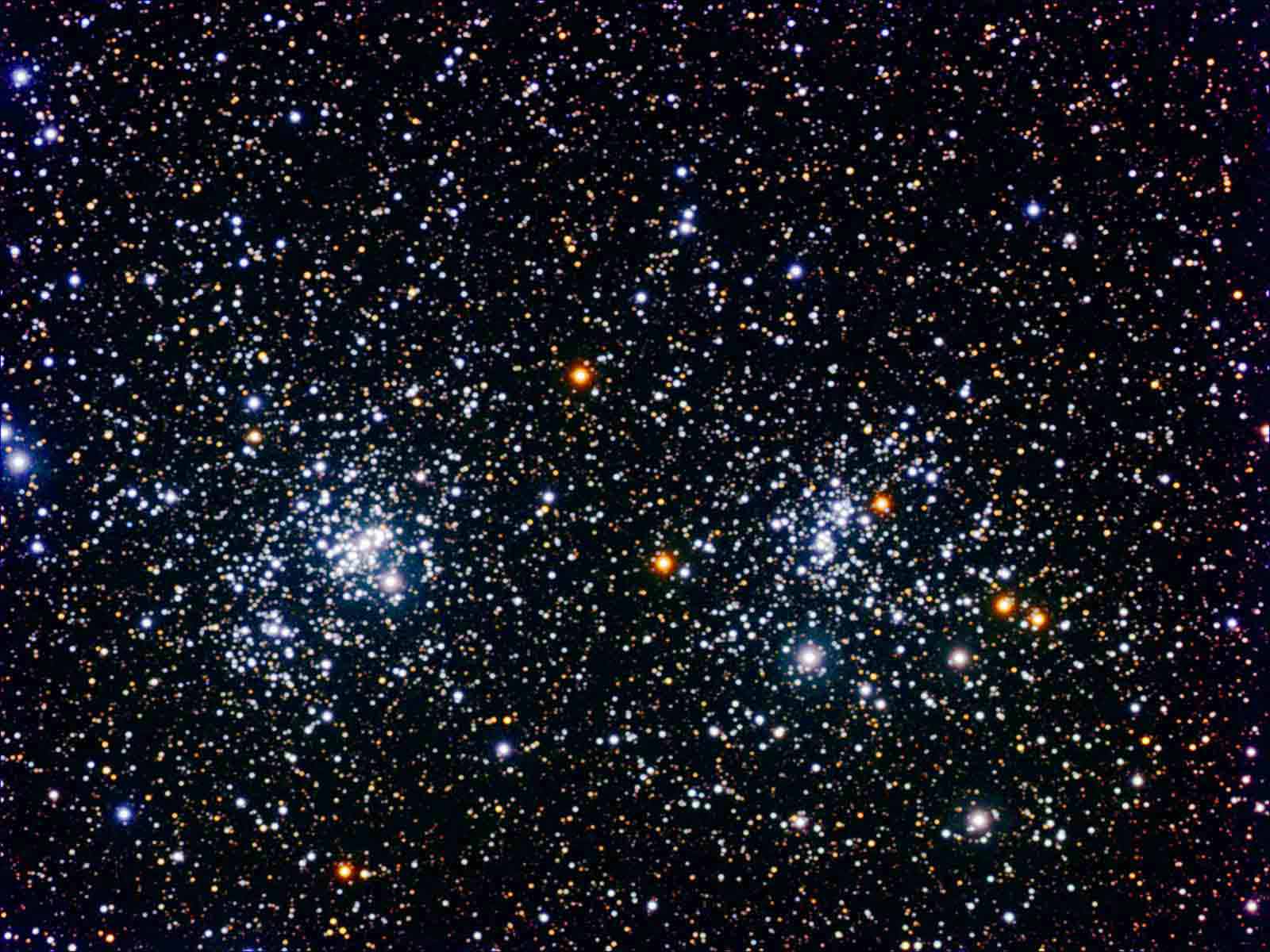
Using my 30mm eyepiece (50x), it still more than fills the view. This is a large, widely scattered open cluster, containing stars that are fairly faint. Scrolling around a bit, I could spot several dozen members. It is impressive and would make a great binocular target.

Using my 18mm eyepiece (83x), the clusters look gorgeous tonight. Between the clusters is a nice bright orange star. Dozens of stars are visible in both clusters. NGC 869 has two of its brightest stars near the center, with a big octopus-shaped knot of fainter stars surrounding one of them. NGC 884 contains two sets of 3 stars near the center. One of the triangles is nearly equilateral and the other is a bit flattened. The flattened triangle points to a gorgeous deep orange star within the cluster.

NEW! - I couldn't detect any signs of the nebula, even with an O-III filter, but the cluster was easily seen. In the center was a loosely heart-shaped ring of stars consisting of a dozen stars, with several other stars scattered around the edges.

NEW! - Again, no signs of the nebula, but the cluster inside was obvious. This is a very loose cluster, with the brightest members near the center. It has perhaps 20-30 members visible.